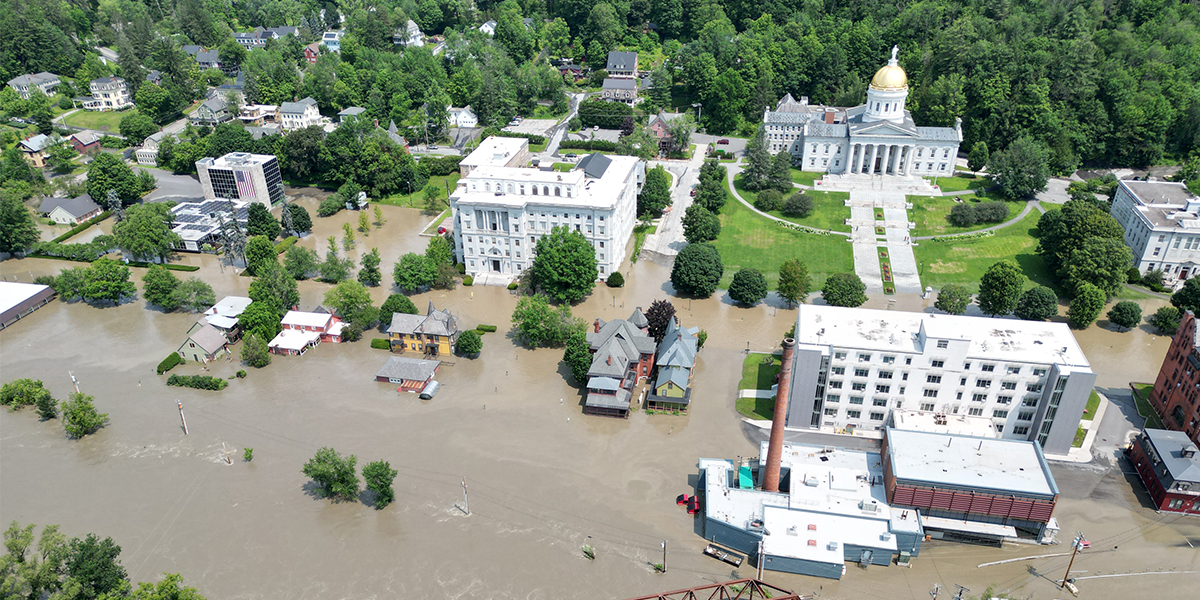Is the Summer of 2023 an Indicator of Future Rain Patterns in Vermont?
Oct. 5th 2023After the state of Vermont was hit by devastating, record-breaking flooding and consistently rainy days this summer, people want to know if we can expect more of this in the future. Research indicates that this summer may be an outlier, but Vermont is getting wetter.
Christopher Picard, a recent graduate of Dartmouth College and current graduate student at the University of Colorado, Boulder, and his team investigated multiple models that simulate precipitation in the Northeast United States historically (1976–2005) and in the future (2070–2099). The team ran two unique model simulations projecting future precipitation and compared these findings to 16 pre-existing model simulations and past published research results.
The research team began by summarizing results from past studies that used climate models to simulate precipitation in the Northeast. These past studies used accurate historical models, but there remained a need to use region-specific models to predict future precipitation. By using a regional climate model, the research team was able to calibrate the model to the Northeast, making it more specific than previous research. After collecting the data, researchers compared the modeled historical findings to gridded observations to understand the accuracy of the models.
“We were looking to find how both total and extreme precipitation events will change by the end of the century under a “business as usual” greenhouse gas emission scenario,” said Picard. “We quantified changes in precipitation in terms of intensity, frequency, distribution, seasonality, and spatial patterns.”
Based on the team’s modeling, total precipitation is projected to increase by 9.7% by the end of the twenty-first century. Picard et al. (2023) find that “virtually all of the Northeast is expected to have increases in annual total precipitation, but the largest changes are projected to occur in West Virginia, central New York, the Lake Champlain basin, and northern Maine.” In this model, winter is projected to have the largest increase in precipitation (16.4%), and fall is projected to have a negligible change in precipitation.
While total precipitation is expected to increase, the number of wet days is projected to remain nearly the same, indicating that storm intensity, rather than frequency, will drive increases in precipitation. Extreme precipitation, defined as the most intense 1% of rainfall events, is also projected to increase by an average of 51.6% across the Northeast. The increase in extreme precipitation is expected to be driven by an increase in the number of extreme precipitation days, not by the increased intensity of each storm.
“Basically, what the model projections show us is that storms will often be larger, classified as extreme precipitation,” explained Picard. “The number of rainy days will remain pretty constant, but more of those rainy days will be bumped up to be classified as extreme precipitation.”
After analyzing the data, the team looked at three potential drivers of increased precipitation. They found that increased precipitable water is the strongest driver of future increased precipitation. As the atmosphere warms up, it can hold more moisture, called precipitable water. In their models, future extreme precipitation days correspond with a 23.8% increase in precipitable water.
Future increased precipitation has implications for many social and environmental systems within the basin and the broader geographic region. Vermont is experiencing the impacts of extreme precipitation through crop losses, water quality degradation, aquatic habitat disturbance, and infrastructure decline. To prepare for these future scenarios, Vermont, the Lake Champlain basin, and other regions in the Northeast can contribute to climate change mitigation and focus on flood resilience and green infrastructure in the planning and design of built, water, and land use systems.
 ecoNEWS VT
ecoNEWS VT